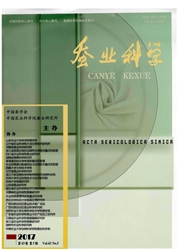

 中文摘要:
中文摘要:
实用家蚕品种转基因是利用分子靶标实现家蚕品种改良与创新的最直接和有效手段,建立高效的适合于转基因显微注射的蚕卵滞育解除方法则是目前家蚕转基因在技术层面尚待解决的关键问题之一。采用早期浸酸、低温催青、复式催青3种方法解除显微注射转基因蚕卵的滞育。结果表明,3种人工处理方法均能解除蚕卵滞育,且获得的非滞育性蚕卵可通过显微注射得到转基因阳性个体,其中采用复式催青法处理的子代蚕卵滞育解除率最高,转基因阳性蛾圈率约25.00%,明显优于低温催青和早期浸酸处理。此外,采用早期浸酸处理,日系品种的蚕卵滞育解除率高于中系品种;采用低温催青和复式催青处理,中系品种子代蚕卵滞育解除率则显著高于日系品种。
 英文摘要:
英文摘要:
Germline transformation of the silkworm is considered the most effective and direct method to innovate and improve silkworm variety by employing molecular targets. Currently, the method to break embryonic diapause of silkworm eggs for microinjection is still one of the key technical problems to be resolved. Three methods, namely earlier acid treatment, low-temperature incubation, and multi-stage incubation, were used to break the embryonic diapause of transgenic silkworm eggs. The results showed that all the three artificial treatment methods could break the embryonic diapause and lead to successful transformation after microinjection. The non-diapause rate of multi-stage incubation method was the highest, with a transformation efficiency of about 25.00% which was obviously superior to the other two methods. Moreover, the nondiapause rates of silkworm varieties of Japanese strain were higher than those of Chinese strain after earlier acid treatment, while the non-diapause rates of silkworm varieties of Chinese strain were higher than those of Japanese strain treated with either low-temperature incubation or multi-stage incubation.
 同期刊论文项目
同期刊论文项目
 同项目期刊论文
同项目期刊论文
 High-efficiency system for construction and evaluation of customized TALENs for silkworm genome edit
High-efficiency system for construction and evaluation of customized TALENs for silkworm genome edit Cre-mediated targeted gene activation in the middle silk glands of transgenic silkworms (Bombyx mori
Cre-mediated targeted gene activation in the middle silk glands of transgenic silkworms (Bombyx mori 期刊信息
期刊信息
